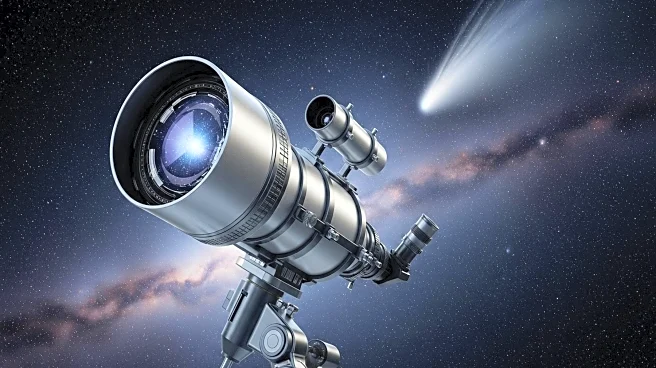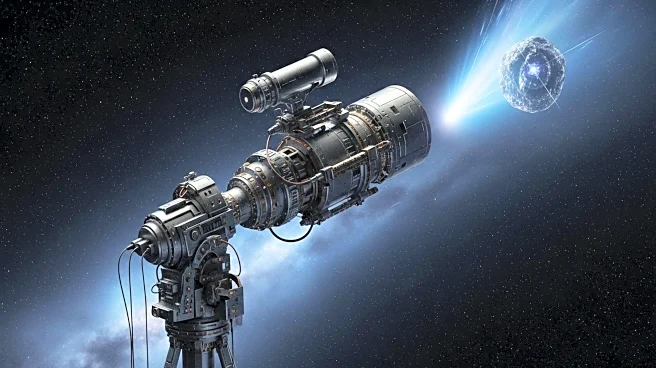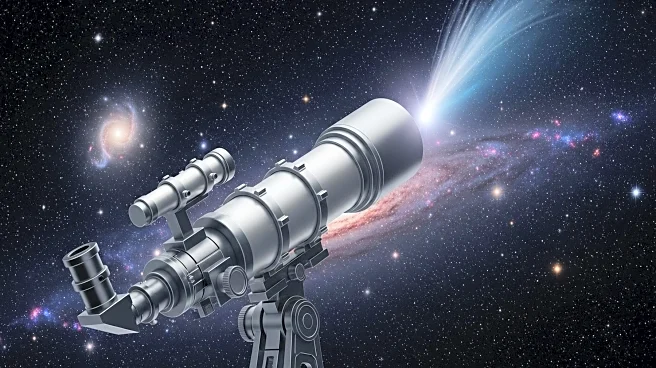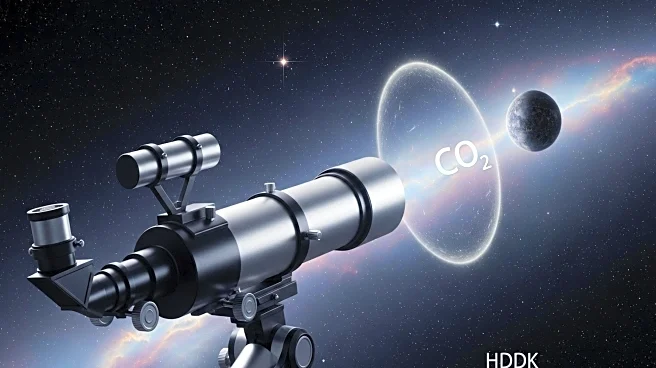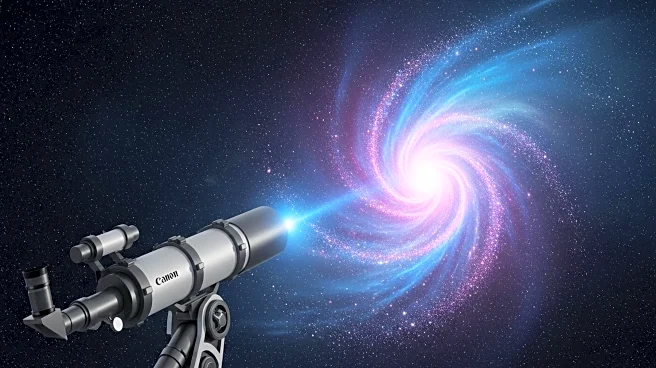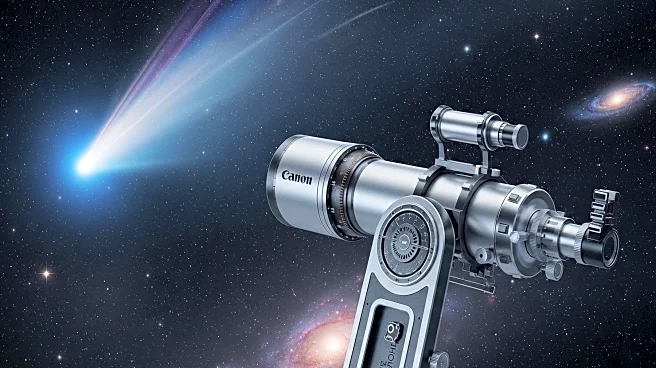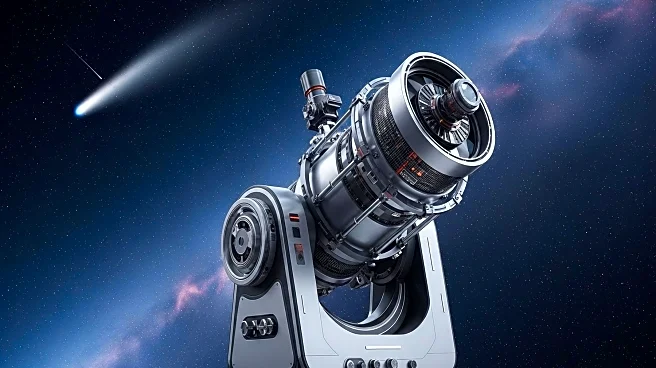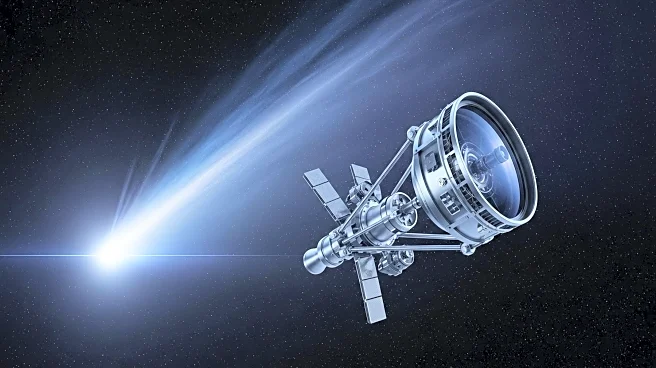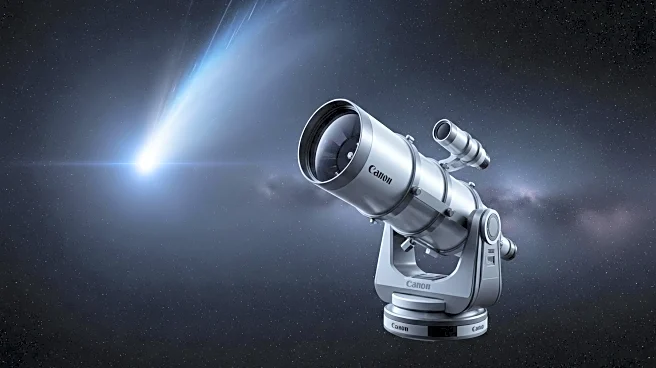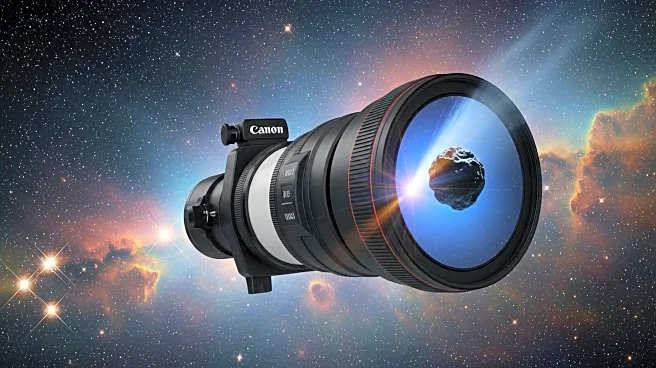What's Happening?
The James Webb Space Telescope, operated by NASA, ESA, and CSA, has conducted observations of the interstellar comet 3I/ATLAS using its Near-Infrared Spectrograph on August 6, 2025. The data collected is currently being analyzed, with preliminary findings available online. This observation is part of a broader effort involving other space telescopes, such as the Hubble Space Telescope and NASA's SPHEREx mission, to study the comet's size, physical properties, and chemical composition. Although 3I/ATLAS poses no threat to Earth, these observations are crucial for astronomers to enhance their understanding of objects within the Solar System.
Why It's Important?
The study of interstellar comets like 3I/ATLAS provides valuable insights into the composition and behavior of celestial bodies that originate outside our Solar System. This research aids in the development of models that predict the movement and impact of such objects, which is essential for planetary defense strategies. Additionally, understanding the chemical makeup of these comets can offer clues about the materials present in other star systems, potentially informing theories about the formation of planets and the possibility of life elsewhere in the universe.
What's Next?
The ongoing analysis of data from the James Webb Space Telescope and other observatories will continue to refine our understanding of 3I/ATLAS. Future observations may focus on tracking its trajectory and further detailing its physical and chemical properties. These efforts will contribute to the broader scientific goal of cataloging and understanding interstellar objects, which could lead to advancements in space exploration and planetary protection measures.
